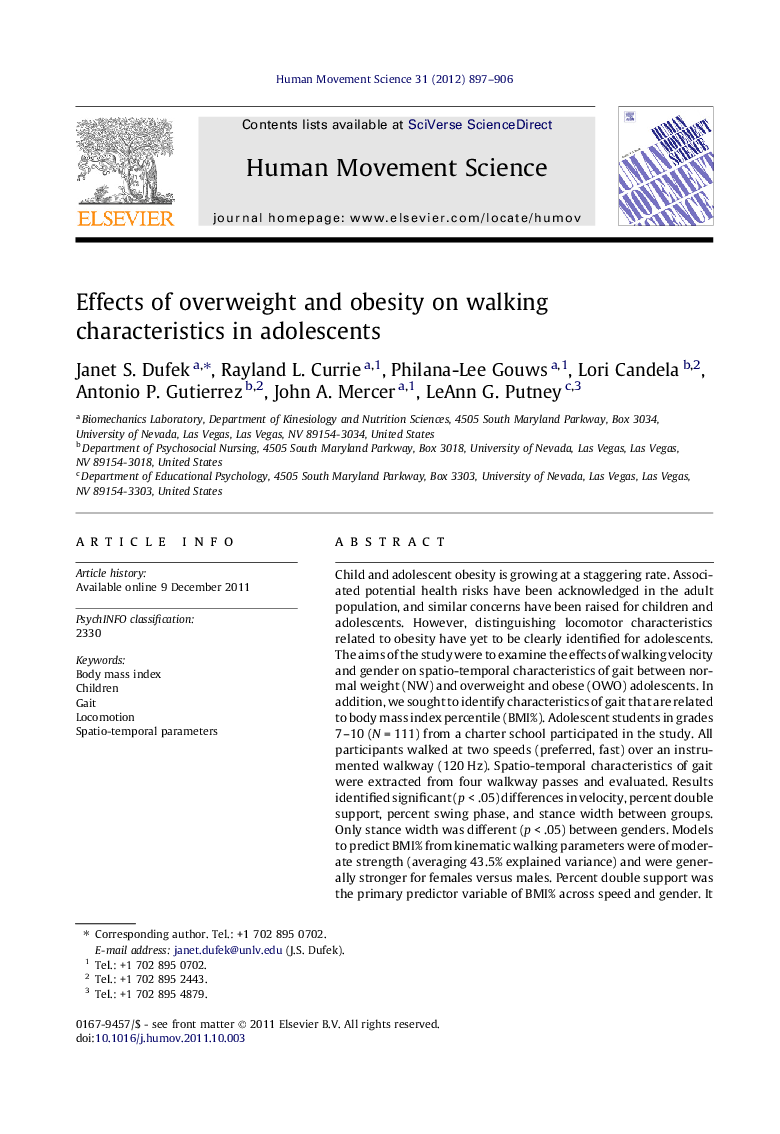| Article ID | Journal | Published Year | Pages | File Type |
|---|---|---|---|---|
| 928472 | Human Movement Science | 2012 | 10 Pages |
Child and adolescent obesity is growing at a staggering rate. Associated potential health risks have been acknowledged in the adult population, and similar concerns have been raised for children and adolescents. However, distinguishing locomotor characteristics related to obesity have yet to be clearly identified for adolescents. The aims of the study were to examine the effects of walking velocity and gender on spatio-temporal characteristics of gait between normal weight (NW) and overweight and obese (OWO) adolescents. In addition, we sought to identify characteristics of gait that are related to body mass index percentile (BMI%). Adolescent students in grades 7–10 (N = 111) from a charter school participated in the study. All participants walked at two speeds (preferred, fast) over an instrumented walkway (120 Hz). Spatio-temporal characteristics of gait were extracted from four walkway passes and evaluated. Results identified significant (p < .05) differences in velocity, percent double support, percent swing phase, and stance width between groups. Only stance width was different (p < .05) between genders. Models to predict BMI% from kinematic walking parameters were of moderate strength (averaging 43.5% explained variance) and were generally stronger for females versus males. Percent double support was the primary predictor variable of BMI% across speed and gender. It is suggested that OWO adolescents may be challenged with control of movement of the center of mass during the support phase of walking.
► We obtained walking data from 56 normal weight and 55 overweight/obese adolescents. ► Spatio-temporal characteristics of gait were obtained and compared between groups. ► Differences observed in velocity, double support %, swing phase % and stance width. ► Double support % was most highly related to adiposity across gender and speed. ► Overweight/obese adolescents have similar walking patterns as their adult cohorts.
